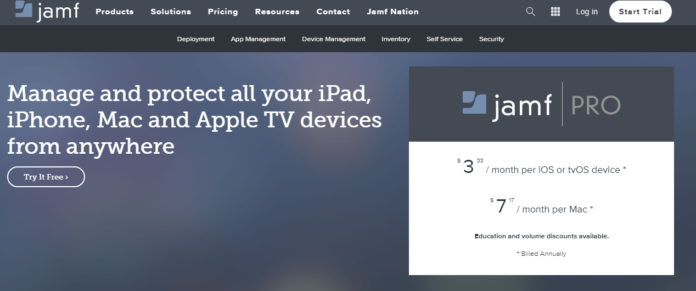

We make it easy for customers to find, buy, deploy and manage software solutions, including SaaS, in a matter of minutes.Ĭome find out how to list your product and leverage this channel today. When you setup a migration project with the EBF Onboarder, you will be asked to select the devices you want to migrate (please read the general documentation to learn more about this).Īpply the devices to a group in your Jamf tenant before using the EBF Onboarder.AWS Marketplace provides a new sales channel for ISVs and Consulting Partners to sell their solutions to AWS customers. Device selection for the source system Jamf Pro You can find this URL under ‘All Settings’ > ‘Global Management’ > ‘Jamf Pro URL’:Ġ3. Register your Jamf Protect tenant in Jamf Pro Register your Jamf Protect tenant to establish a secure connection between Jamf Pro.
Jamf pro api install#
Click on ‘+ New’ to start the account creation process. To install jamf Pro API, run this command in your terminal: pip install jssapi This is the preferred method to install jamf Pro API, as it will always install the most recent stable release.


You need to create an API-User to allow the EBF Onboarder to access the Jamf Pro system:įollow these steps to create the API-User: The role administrator is used here as well. NOTE: The steps for Jamf School are equal to Jamf Pro. This documentation complements the general EBF Onboarder documentation and provides more detailed information to setup Jamf Pro as the target system and also as the source system.
Jamf pro api update#
The Create, Read, Update and Delete privileges for an account or group within Jamf Pro correspond respectively with the POST, GET, PUT and DELETE HTTP methods. It also tells you how to initiate the migration process and how to track the migration status. The Classic API uses the standard User Accounts and Groups functionality of Jamf Pro. It describes how you can setup a migration project, how you can setup invitation emails and reminders which guide your users through the migration. There is a general documentation available for the EBF Onboarder, where you can find information about its prerequisites and the whole migration project.


 0 kommentar(er)
0 kommentar(er)
